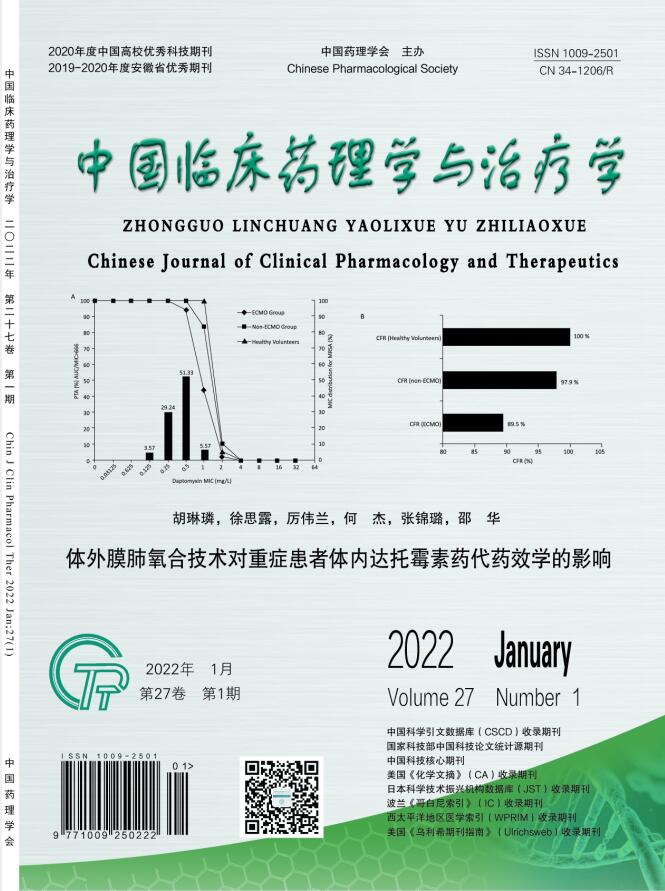Bioequivalence of amlodipine besylate tablets in Chinese healthy subjects
GAO Rong, MA Yazhong, ZHAO Haixia, WANG Zhaoyuan, ZHANG Weihong, YUAN Hailong
2022, 27(1):
56-62.
doi:10.12092/j.issn.1009-2501.2022.01.008
 Asbtract
(
631 )
Asbtract
(
631 )
 PDF (745KB)
(
468
)
Related Articles |
Metrics
PDF (745KB)
(
468
)
Related Articles |
Metrics
AIM: To evaluate the bioequivalence of two kinds of amlodipine besylate tablets in Chinese healthy subjects under fasting and fed conditions. METHODS: Twenty-four healthy subjects were enrolled, and a random, open, single-dose, two preparations, two sequences and double-crossover design was used to give the test or reference preparations under fasting and postprandial conditions. The concentration of metformin in plasma was detected by LC-MS/MS, and the main pharmacokinetic parameters were calculated to evaluate the bioequivalence. RESULTS: In fasting state, the mean of Cmax, AUC0-t, and AUC0-∞ of the test and reference preparations was (3 462.08±683.46) pg/mL, (159 891.00±45 951.00) pg·mL-1·h, (194 850.00±63 829.00) pg·mL-1·h, (3 346.09±710.09) pg/mL, (159 065.00±45 214.00) pg·mL-1·h, (190 461.00±66 160.00) pg·mL-1·h, respectively. The ratio of geometric mean and its 90% confidence interval are 104.82% (100.35%, 109.50%), 103.32% (98.13%, 108.78%), 103.98% (97.95%, 110.38%). In fed condition, the mean of Cmax, AUC0-t, and AUC0-∞ of the test and reference preparations was (2 785.00±600.91) pg/mL, (138 289.00±30 684.00) pg·mL-1·h, (158 765.00±39 260.00) pg·mL-1·h, (2 960.00±671.27) pg/mL, (140 990.00±33 326.00) pg·mL-1·h, (163 996.00±43 606.00) pg·mL-1·h, respectively. The ratio of geometric mean and its 90% confidence interval are 94.89% (88.94%, 101.23%), 97.96% (92.85%, 103.34%) and 97.26% (91.61%, 103.25%). CONCLUSION: Two kinds of amlodipine besylate tablets are bioequivalent, and have similar safety and tolerability in Chinese healthy subjects.


